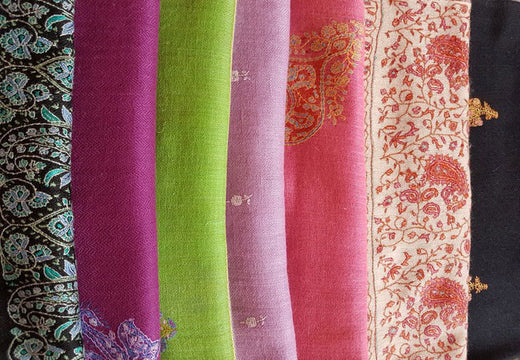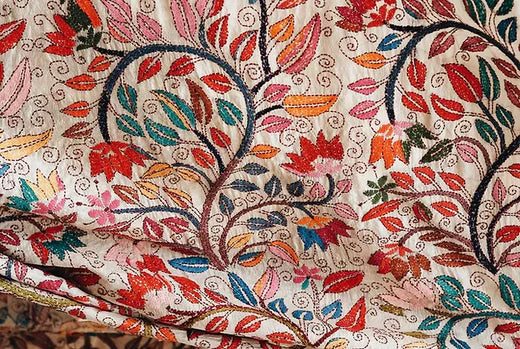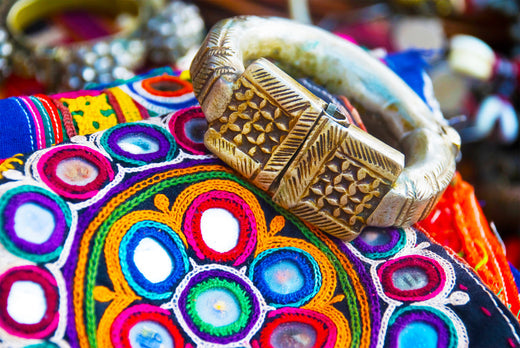
PASHMINA FABRIC
Pashmina is a fine cashmere wool, coming from Kashmir in India and some parts of Nepal. The word ‘Pashmina’ comes from the Persian word ‘Pashmineh’ which means ‘made from Pashm’, and Pash means wool in Persian.
The Changpa tribe, from the Changthang region are known to be the traditional producers of Pashmina Wool in the Ladakh region. These tribal people rear sheep in harsh and chilly winter climate and lead a nomadic life to produce Pashmina wool. The quality of the cashmere produced in the Gobi Desert is regarded better than the Himalayas variant, because of its consistent manufacturing process and modern machinery.
Cashmere shawls are being made in Kashmir and Nepal from thousands of years. Both, the Pashmina and Cashmere shawls are derived from mountain sheep. The main difference between them is the diameter of the fiber. The Pashmina fibers are finer and thinner than the cashmere ones and, therefore, ideal for making lightweight apparel like fine scarves. A Cashmere product can last for years if taken proper care. It gets softer and more luxurious with each wash. This fabric should preferably be dry cleaned. However, you can gently hand wash it occasionally with a woolen fabric detergent. Hand washing a new Pashmina is recommended to make sure that the natural vegetable dyes do not bleed any color. After washing it, leave it on a flat surface to dry. It is slightly warmer and coarser than the Cashmere fibers obtained from lower region goats. Ones from Nepal is called the Chyangra Pashmina. The shawl from Nepal came into the limelight when it was worn by Princess Diana.





